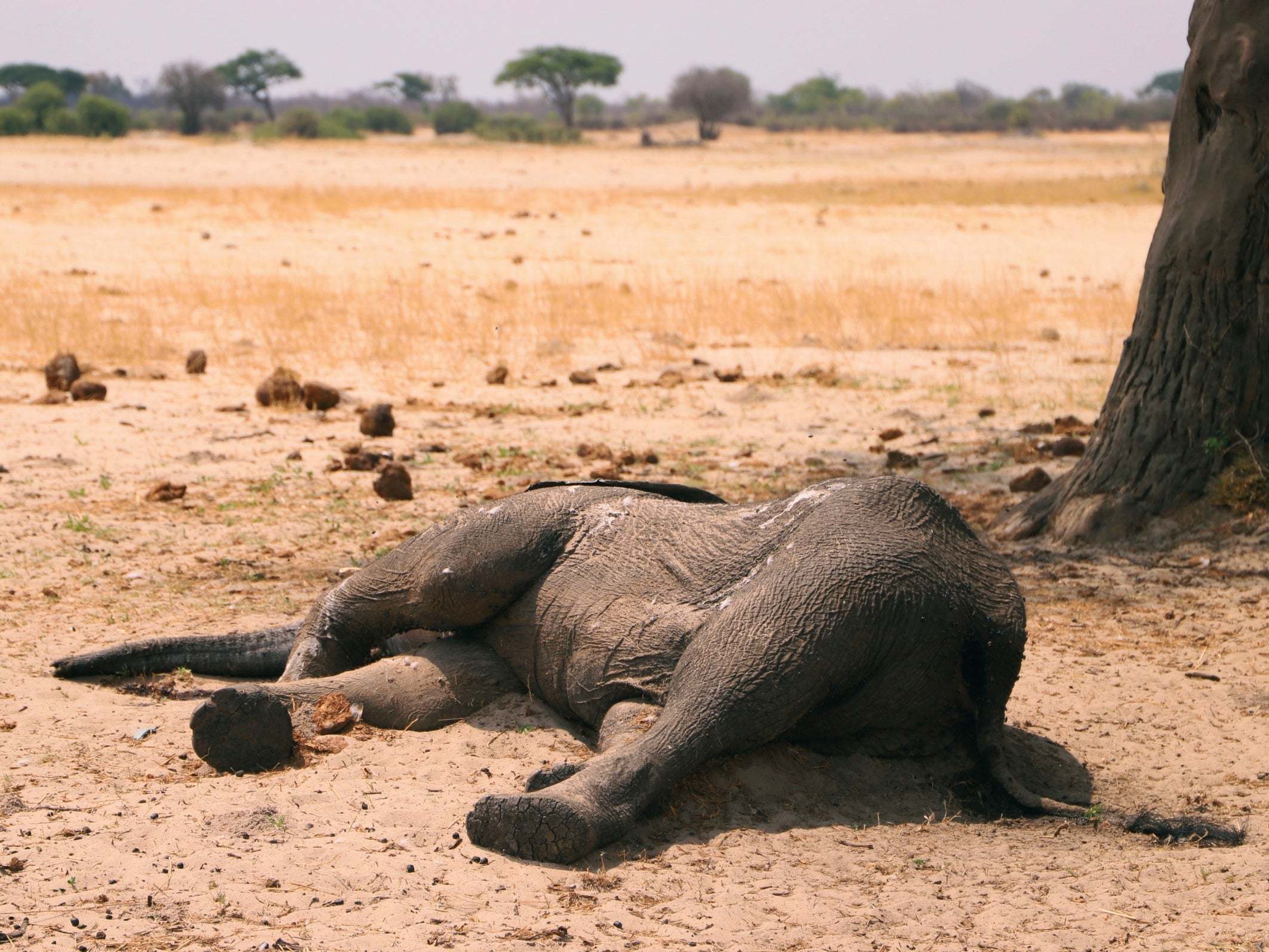More than 200 elephants die in Zimbabwe’s largest national park amid drought
‘Almost every animal is being affected,’ says park spokesperson

Your support helps us to tell the story
From reproductive rights to climate change to Big Tech, The Independent is on the ground when the story is developing. Whether it's investigating the financials of Elon Musk's pro-Trump PAC or producing our latest documentary, 'The A Word', which shines a light on the American women fighting for reproductive rights, we know how important it is to parse out the facts from the messaging.
At such a critical moment in US history, we need reporters on the ground. Your donation allows us to keep sending journalists to speak to both sides of the story.
The Independent is trusted by Americans across the entire political spectrum. And unlike many other quality news outlets, we choose not to lock Americans out of our reporting and analysis with paywalls. We believe quality journalism should be available to everyone, paid for by those who can afford it.
Your support makes all the difference.At least 200 elephants have died in Zimbabwe’s largest national park amid a severe drought.
Since October, the giant creatures have been found in Hwange National Park, although other parks have also been affected by the drought.
Other species including giraffes, buffalos and impalas are also dying and the situation will only improve once rain returns, said Tinashe Farawo, a spokesperson for Zimbabwe National Parks and Wildlife Management Authority (Zimparks).
“Almost every animal is being affected,” he said. “Of course, elephants are easily noticed during patrols or game drives, but some bird species are seriously affected because they can only breed in certain tree heights and those trees are being knocked down by elephants.”
Many animals are straying from Zimbabwe’s parks into nearby communities in search of food and water.
Zimparks said 33 people have died from conflict with animals this year.
The drought has also taken its toll on crops, leaving more than half of the population in need of food aid.
The agency said it plans to move 600 elephants, two prides of lions and other animals from the Save Valley Conservancy in the south east of the country to less congested parks.
A pack of wild dogs, 50 buffalos, 40 giraffes and 2,000 impalas will also be relocated, Mr Farawo said.
He added: “This is the biggest translocation of animals in the history of wildlife movement here because we are talking of distances of more than 1,000km.”
The animals “have exceeded their ecological carrying capacity,” he added. “If the populations go unchecked, the animals will threaten the very ecosystem they depend on for survival.”
Zimbabwe has an estimated 85,000 elephants, second only to neighbouring Botswana with more than 130,000.
The southern African nation says it is struggling to cope with booming numbers of wild elephants and wants to be allowed to sell its ivory stockpile and export live elephants to raise money for conservation and ease congestion in the drought-affected parks.
Mr Farawo said Zimparks, which does not receive government funding, requires $40m (£31.1m) annually for conservation efforts but only generates half the amount.
The country exported 101 elephants between 2016 and this year, mainly to China and the United Arab Emirates, raising more than £2 million for conservation efforts, according to Zimparks.
Zimbabwe, together with South Africa, Botswana and Namibia, unsuccessfully lobbied the Convention on International Trade in Endangered Species for controlled sales of their ivory stocks at a meeting in August.
Additional reporting by agencies.
Join our commenting forum
Join thought-provoking conversations, follow other Independent readers and see their replies
Comments